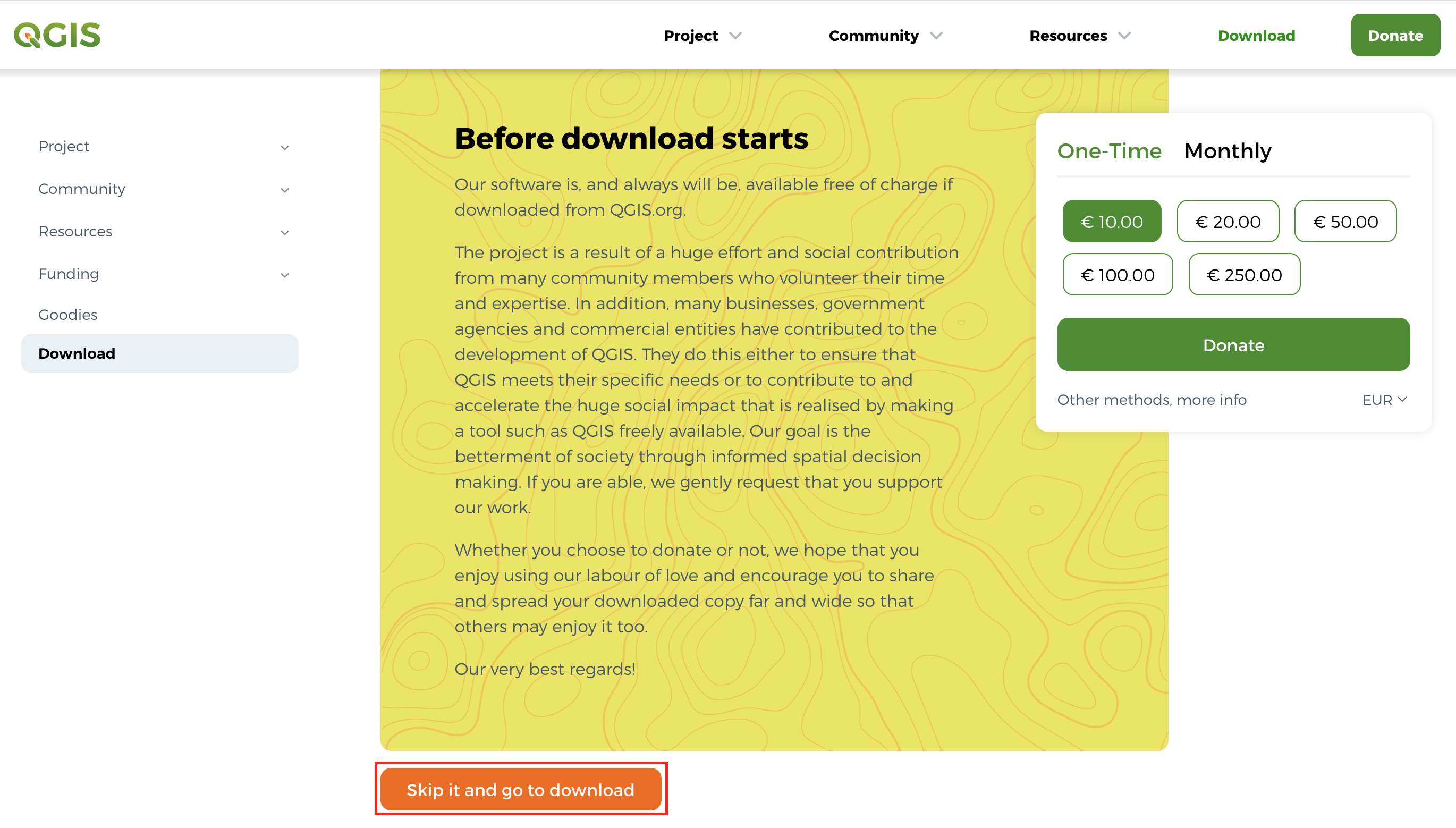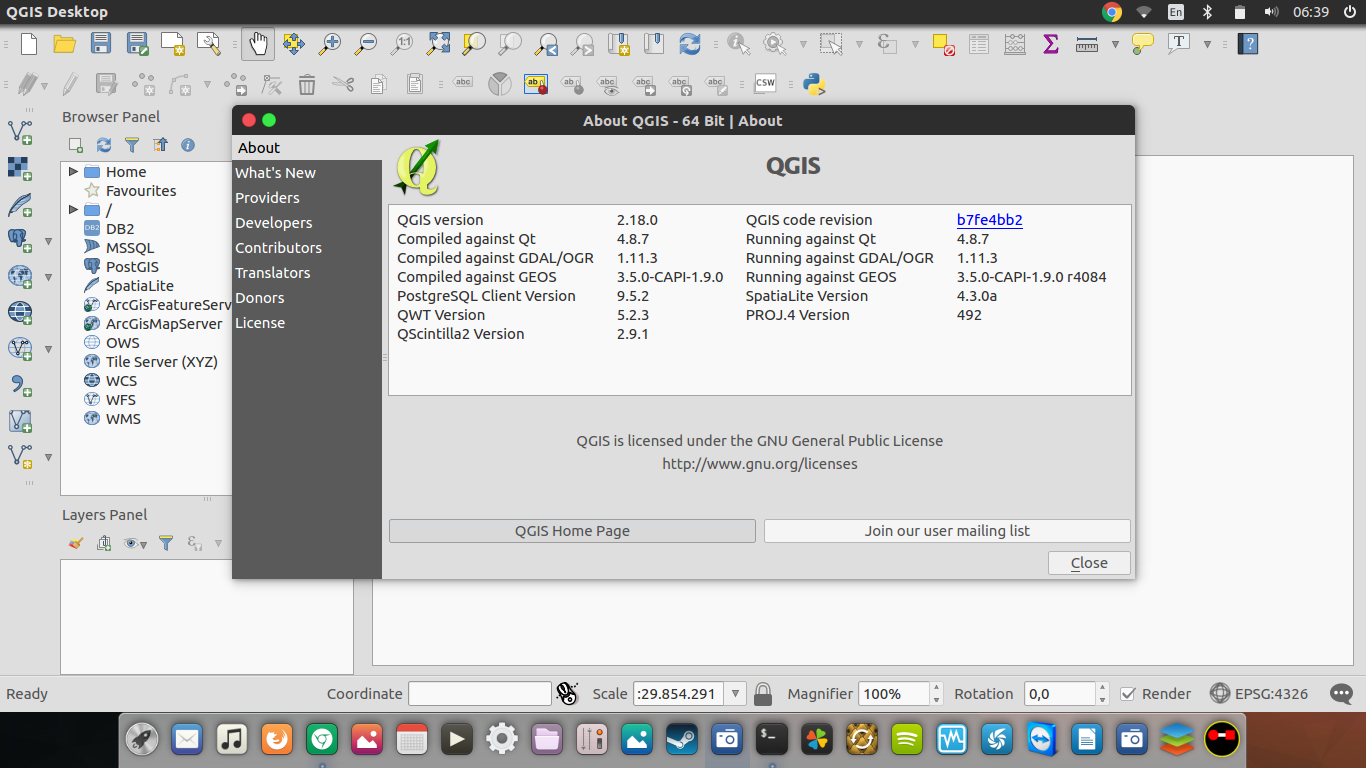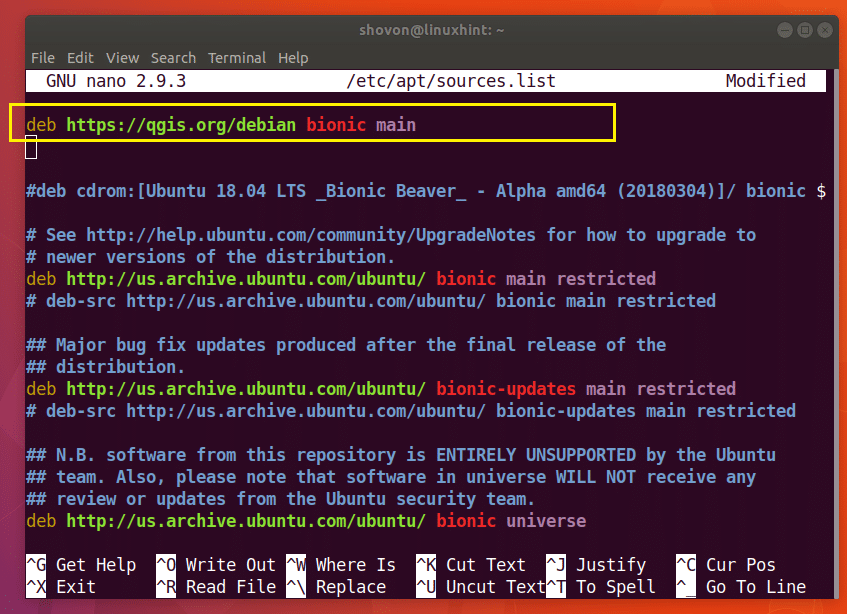
- Sudo apt get install qgis update#
- Sudo apt get install qgis software#
- Sudo apt get install qgis code#
- Sudo apt get install qgis download#
I then tried the same thing without the QGIS repositories, but with the same results, which is why I'm thinking there are still some broken leftovers from my previous attempts on my machine.
Sudo apt get install qgis code#
Įrrors were encountered while processing:Į: Sub-process /usr/bin/dpkg returned an error code (1) Processing triggers for libc-bin (2.23-0ubuntu9).

No apport report written because MaxReports is reached alreadyĭpkg: error processing package qgis-plugin-grass (-configure): Package qgis-provider-grass is not configured yet. Qgis-plugin-grass depends on qgis-provider-grass (= 2.14.17+dfsg-1~xenial3) however: Qgis-plugin-grass depends on qgis (= 2.14.17+dfsg-1~xenial3) however: Qgis-provider-grass depends on qgis (= 2.14.17+dfsg-1~xenial3) however:ĭpkg: error processing package qgis-provider-grass (-configure):ĭpkg: dependency problems prevent configuration of qgis-plugin-grass: No apport report written because the error message indicates its a followup error from a previous failure.ĭpkg: dependency problems prevent configuration of qgis-provider-grass: Setting up qgis-plugin-grass-common (2.14.17+dfsg-1~xenial3). Package qgis-providers is not configured yet.ĭpkg: error processing package qgis (-configure):ĭependency problems - leaving unconfigured Qgis depends on qgis-providers (= 2.14.17+dfsg-1~xenial3) however: However, at the end of the installation process I now get the messages: dpkg: dependency problems prevent configuration of qgis: Sudo apt install qgis python-qgis qgis-plugin-grass

Specifically running sudo apt purge qgis* python-qgis* -auto-remove I didn't really know what to make of it, so I tried reinstalling the whole thing. usr/bin/qgis.bin: symbol lookup error: /usr/lib/libqgis_core.so.2.14.17: undefined symbol: OGR_F_SetFieldNull For some reason, it broke in the process and I'm not able to start it anymore.
Sudo apt get install qgis update#
I was trying to update QGIS using these steps.

Thanks for reading this article.System info: Ubuntu 16.04.3 LTS, kernel 4.10.0-33-generic That’s how you install and get started with QGIS 3 on Ubuntu 18.04 Bionic Beaver. Now have fun drawing your geospatial information. You can click on Project and click on New from the dropdown menu to create a new Project in QGIS 3 as marked in the screenshot below. The About page of QGIS shows a lot of information about the QGIS you’ve installed as you can see from the screenshot below. You can click on Help and then click on About from the dropdown menu to check more information about QGIS. Once QGIS 3 loader loaded everything it needs, you should see the main window of QGIS 3 as shown in the screenshot below. You should see a loading window of QGIS 3 as shown in the screenshot below. Don’t import my QGIS 2 settings and click on the Let’s get started! button as marked in the screenshot below.
Sudo apt get install qgis software#
If you’re new to QGIS, then select I want a clean start. QGIS (and GRASS) If you install QGIS with the built-in software managers, you will most likely get an outdated QGIS version. If you’ve used QGIS before and you have settings from previous version of QGIS, you should select Import settings from QGIS 2. You should see the following window as shown in the screenshot below. Now you can go to Activities of GNOME 3 desktop environment or Application Menu of other desktop environments and look for qgis and you should be able to find the logo of QGIS Desktop as shown in the screenshot below. The installation process of QGIS 3 is complete at this point.
Sudo apt get install qgis download#
The download and installation process of QGIS 3 should start. Now press ‘y’ and then press to continue.

$ sudo apt-get install qgis python-qgis qgis-plugin-grass Now you have to import the GPG key of QGIS 3 with the following command: If you’re using nano just press + x once you’ve added the apt line of QGIS 3 to the /etc/apt/sources.list file. This is how it looks like once the apt line of QGIS 3 is added to the /etc/apt/sources.list file. The codename of Ubuntu Bionic Beaver is bionic.Īdd the following line to the top or bottom of the /etc/apt/sources.list file: You have to add QGIS 3’s apt line here.Īs you’re using Ubuntu 18.04 Bionic Beaver, you will have to add Ubuntu 18.04 specific repository of QGIS 3. Here you can see all the Ubuntu’s default package repository lists or more specifically apt lines. It should look something like the screenshot below. etc/apt/sources.list file should be opened with your editor of choice. Just type in the line number in the left side of each editor and press. It should ask you to choose a text editor.


 0 kommentar(er)
0 kommentar(er)
